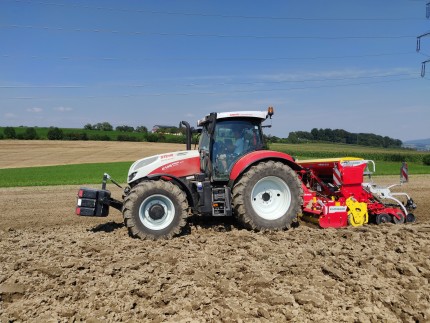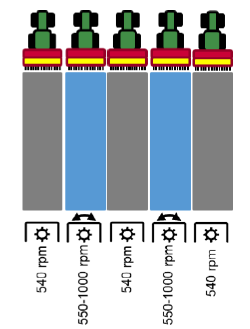Pilot Action ISOBUS Seedbed control
Soil roughness is a key factor to take into account during seedbed preparation.
On the one hand, a fine seedbed is needed for good plant emergence. On the other hand, a rough soil prevents soil erosion and can be prepared in a more energy-efficient way.
The control system based on an ISOBUS Class III application controls the tractor based on the measured soil roughness in real time. The pilot action led by our partner, HBLFA Francisco Josephinum focuses on testing the system, finding weaknesses and areas for improvement, and defining the integration in the process flow at seeding.
Objectives
The aim of the Pilot Action is the further development of a system for the objective control of variable parameters during the sowing of cereals when using a power harrow - drill combination in order to achieve a homogeneous seedbed. This includes a deep analysis of the findings concerning the relations between soil tillage implement, driving speed and seed emergence, a further development of the camera (hardware and software), the optimum seedbed preparation, the determination of different soil structures (data recording using TC and creation of an application map).
Following main task are part of this pilot action:
- Investigate relationship between the tillage machine, driving speed and seed emergence.
- Operation with ISOBUS Class3 tractors in combination with a seed drill.
- Investigate limitations and possibilities of new ISOBUS Class3 Tractor Implement Management (TIM) applications.

Transnational approach
Due to the need for expensive new ISOBUS equipment to investigate topics in the field of ISOBUS, this pilot action has been split up. Field trials with the TIM application will be done by HBLFA Francisco Josephinum in Austria and complementary field trials without the need for an ISOBUS tractor-implement-system are carried out by ARRSA in Poland.
HBLFA FJ will perform field trials with the tractor and seed drill. The tractor is controlled via the TIM application. Field trials include strip wise alternating seeding with and without the control system, as shown in the figure.

Research Agenda: Seeding of spring wheat in Poland
| Field | fields (min. 1 ha) with different soil types |
| Main Tasks |
|
